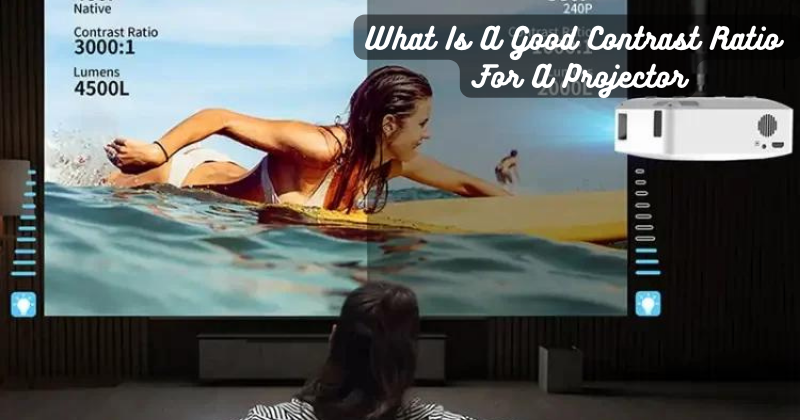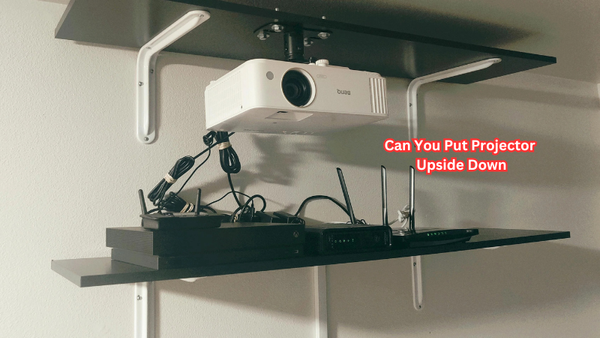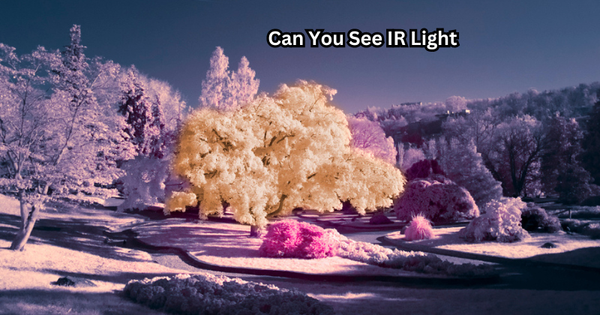Regarding projectors, the contrast ratio is vital in delivering high-quality visuals. The contrast ratio refers to the difference between the darkest and brightest parts of an image, and it directly impacts the level of detail and clarity in projected content.
A good contrast ratio ensures that the darker areas appear deep and rich while the brighter areas are vibrant and well-defined. While there is no definitive standard for a "good" contrast ratio, experts generally recommend a minimum ratio of 2,000:1 or higher for home projectors. A contrast ratio of 5,000:1 or above is desired for professional-grade models to achieve exceptional image quality.
It's important to consider the viewing environment and personal preferences when determining the ideal contrast ratio for your specific projector needs. This guide will provide a better understanding of contrast ratios and help you determine a good contrast ratio for a projector.
What Is Projector Contrast Ratio Specifically?
Before diving into what constitutes a good contrast ratio for a projector, let's first define what the term means. As mentioned earlier, contrast ratio refers to the difference between light and dark areas of an image. It is typically calculated by dividing the brightness of the brightest white pixel in an image by the brightness of the darkest black pixel. Contrast ratios are typically displayed as a ratio of 1:1, with the first number representing the brightest part and the second number representing the darkest part.
In simpler terms, the contrast ratio measures the range of light that a projector can produce. The higher the contrast ratio, the greater the difference between shades of gray or color that a projector can display. This results in a more dynamic and visually appealing image with better depth and detail.
Why Is Contrast Ratio Important For Projectors?
Having a good contrast ratio is essential for projectors because it directly contributes to the overall picture quality. A high contrast ratio ensures that colors are accurately represented and details in both dark and bright areas are visible. Without a sufficient contrast ratio, images can appear washed out or muddy, making it difficult to discern finer details.
A higher contrast ratio also improves the viewing experience, especially in dark or dimly lit environments. ANSI contrast ratio is another important measure of contrast for projectors, as it takes into account the ambient light in a room.
Another factor to consider is the viewing environment. In brightly lit rooms, a higher contrast ratio is necessary to combat any external light sources and maintain picture quality. In dark or home theater settings, the contrast ratio can be more forgiving but still plays a significant role in the overall image quality. Lower contrast ratio projectors may struggle to produce deep blacks and crisp whites, resulting in an inferior viewing experience.
The Impact of Contrast Ratio on Picture Quality
A good contrast ratio not only makes images look more vibrant and detailed but also improves overall picture quality. It can provide a more immersive viewing experience, particularly when watching movies or playing video games where subtle details are important. A higher contrast ratio also offers better color accuracy, as it allows for a wider range of shades to be displayed accurately.
On the other hand, a low contrast ratio can result in images that lack depth and appear flat or washed out. This is especially noticeable in dark scenes, where details may be lost due to poor contrast. One contrast ratio: darker colors may appear grayish, and lighter colors can lose their brightness. Projector brightness is also a factor, as it plays a role in the overall contrast ratio. Projected image quality can greatly improve if the contrast ratio is up to par.
What Is A Good Contrast Ratio For A Projector?
As mentioned earlier, there is no definitive standard for a "good" contrast ratio. However, most experts recommend a minimum contrast ratio of 2,000:1 or higher for home projectors. This range can provide good picture quality and detail in both bright and dark areas.
Factors affecting the ideal contrast ratio may include the projected content type and personal preferences.
Some Factors Affecting Contrast Ratio
Here are some factors that can impact the contrast ratio of a projector:
Dynamic Contrast Ratio:
This is an enhanced contrast ratio that varies depending on the content being projected. The projector analyzes the image and adjusts the contrast accordingly, resulting in a higher overall ratio. The contrast ratio is important for darker scenes and can significantly improve picture quality.
Lighting Conditions:
As mentioned earlier, the ambient light in the room can significantly affect the contrast ratio. A higher contrast ratio is needed in brightly lit spaces to compensate for external lighting sources and maintain good image quality.
Screen Type:
The type of screen used with a projector can also impact the contrast ratio. Some screens are specifically designed to enhance contrast and improve picture quality.
Color Accuracy:
A high contrast ratio is one of many factors that contribute to good color accuracy. Other factors, such as color saturation, brightness, and color temperature, also play a role in producing accurate colors. Always high contrast ratios don't necessarily guarantee good color accuracy.
Choosing the Right Contrast Ratio for Your Projector
To get the right contrast ratio for your projector, there are a few things to consider:
Intended Use:
What will you be using the projector for? If it's for home entertainment, a contrast ratio of 2,000:1 or higher is recommended. However, professional-grade projectors may require a higher ratio for more accurate color representation. For gaming, a higher contrast ratio is preferred to provide better detail in dark areas.
Screen Size:
The size of the screen also plays a role in determining the ideal contrast ratio. A larger screen may require a higher contrast ratio to maintain picture quality, while a smaller screen may be more forgiving.
Viewing Environment:
Will the projector be used in a bright or dimly lit room? As mentioned earlier, lighting conditions can greatly impact the ideal contrast ratio.
Personal Preferences:
Ultimately, personal preferences also play a role in choosing the right contrast ratio for your projector. Some may prefer higher ratios for a more immersive experience, while others may be satisfied with lower ratios.
With all these factors in mind, it is important to research and compare different projectors to find the one with the best contrast ratio for your specific needs. Remember that a good contrast ratio is just one aspect of picture quality, and other factors such as resolution, brightness, and color accuracy should also be taken into consideration.
Perceived Contrast Ratio vs Actual Contrast Ratio
It's important to note that the contrast ratio advertised by projector manufacturers may not always accurately reflect the actual contrast experienced by viewers. This is because the perceived contrast ratio, or how we perceive contrast in images, can vary from person to person. Factors such as room lighting, viewing distance, and personal visual preferences can all affect how we perceive contrast.
Additionally, some manufacturers may use different methods to measure contrast ratio, which can lead to inconsistencies in advertised numbers. Therefore, it is always best to read reviews and do thorough research before deciding solely based on the contrast ratio advertised by a projector.
How Do You Measure Projector Contrast Ratios?
Projector contrast ratios are measured by displaying a pure white image and then measuring the level of black produced. The difference between these two levels is then calculated to determine the contrast ratio.
There are three main methods used to measure contrast ratio:
ANSI Contrast Ratio:
This method uses an ANSI checkerboard pattern, which alternates between black and white squares, to measure contrast. This can provide a more accurate representation of contrast in real-world images.
Full On/Off Contrast Ratio:
This method measures the difference between a fully illuminated white image and a completely dark image to determine the contrast ratio. However, this method may not accurately reflect contrast in real-world scenarios as it does not account for ambient light.
Dynamic Contrast Ratio:
As mentioned earlier, this method measures contrast by analyzing the content being projected and adjusting brightness accordingly. This can result in a higher contrast ratio compared to other methods.
With all these methods, it is important to keep in mind that they may only sometimes provide a completely accurate representation of the contrast ratio experienced by viewers. But it gives you a good idea of the projector's capabilities. Always measure projector contrast ratio in a controlled environment for more accurate results.
FAQs
Is 100000 1 contrast ratio good?
A contrast ratio of 100,000:1 is considered very good and can provide excellent picture quality with deep blacks and bright whites. However, it is important to also consider other factors, such as resolution and color accuracy, when choosing a projector.
What is the ideal contrast ratio for gaming?
For gaming, a contrast ratio of 10,000:1 or higher is recommended to provide good detail in dark areas and enhance overall picture quality. However, personal preferences may vary, and some gamers may prefer even higher ratios for a more immersive experience.
How high should contrast be on projector?
The ideal contrast ratio for a projector can vary depending on factors such as intended use, screen size, and personal preferences. As a general guideline, a contrast ratio of 2,000:1 or higher is recommended for home entertainment projectors. For professional-grade projectors, a higher contrast ratio may be necessary for more accurate color representation.
What is the best brightness and contrast for a projector?
The best brightness and contrast for a projector depends on factors such as screen size and viewing environment. As a general rule, higher brightness and contrast are preferable for larger screens or bright rooms. It is recommended to find the right balance between these settings to achieve optimal picture quality.
Conclusion
In conclusion, when it comes to determining a good contrast ratio for a projector, experts generally recommend a minimum ratio of 2000:1 or higher for home theater use. However, it is important to note that the higher the contrast ratio, the better the image quality and visual experience. Projectors with higher contrast ratios can deliver deeper blacks and brighter whites, creating more vibrant and immersive visuals.
While there is no universal standard for what constitutes an ideal contrast ratio, it is essential to consider factors such as ambient lighting conditions and personal preferences when selecting a projector. Thorough research and understanding of the specifications provided by manufacturers can help make an informed decision. Ultimately, a good contrast ratio enhances image quality and ensures the projected content is visually appealing and engaging.





